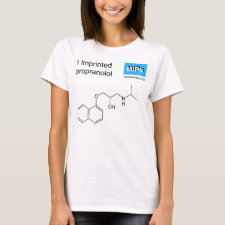
Authors: Wu YL, Zhao J, Wang C, Lu J, Meng MJ, Dai XH, Yan YS, Li CX
Article Title: A novel approach toward fabrication of porous molecularly imprinted nanocomposites with bioinspired multilevel internal domains: Application to selective adsorption and separation membrane.
Publication date: 2016
Journal: Chemical Engineering Journal
Volume: 306
Page numbers: 492-503.
DOI: 10.1016/j.cej.2016.07.089
Alternative URL: http://www.sciencedirect.com/science/article/pii/S138589471631035X
Abstract: The development of membrane-associated molecularly imprinted materials that can rapidly adsorb and separate specific compound has broad technological applications for areas ranging from sewage treatments to biomedical devices. However, issues such as low permselectivity and unstable composite structures are restricting it from developing stage to a higher level. Here, inspired by the bioadhesive technology of polydopamine (pDA), we present a novel molecular imprinting strategy to integrate multilevel nanocomposites (Br-Ag-pDA@SiO2) into the porous membrane structure. The molecularly imprinted nanocomposite membranes (MINcMs) were then obtained through an in situ photoinitiated ATRP method by using propranolol as the template molecule, which was one of the pharmaceutically active compounds (PhACs). In this work, largely enhanced specific rebinding capacity (48.53 mg/g) and permselectivity (the permeability factor β values were also more than 9.6) had been successfully achieved, which should be attributing to the creation of high-stability and uniform growth of propranolol-imprinted polymer layers onto the nanoparticle-integrated nanocomposite membrane surfaces. Specifically, the as-prepared MINcMs not only exhibited rapid adsorption dynamics of template molecule, but also possessed excellent regeneration performance. Moreover, when the other PhACs were respectively imprinted, similar recognition selectivity could be observed dependent on the template molecule. Importantly in this case, all synthesis methods were conducted in aqueous at ambient temperature, which was environmental friendly for scaling up without causing pollution
Template and target information: propranolol
Author keywords: molecularly imprinted membrane, Pharmaceutically active compounds, Bioinspired nanocomposite synthesis, Selective recognition and separation



Join the Society for Molecular Imprinting

New items RSS feed
Sign-up for e-mail updates:
Choose between receiving an occasional newsletter or more frequent e-mail alerts.
Click here to go to the sign-up page.
Is your name elemental or peptidic? Enter your name and find out by clicking either of the buttons below!
Other products you may like:
 MIPdatabase
MIPdatabase









